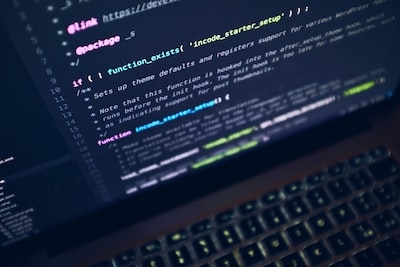In an era where technological advances have become the beating pulse of industries across the globe, it is no wonder that the human resources sector has also embraced the potential benefits of artificial intelligence (AI). With machine learning algorithms and data-driven decision making, HR departments have witnessed the streamlining of processes, increased efficiency, and improved hiring practices.
However, this rapid adoption of AI has also raised concerns regarding the security of human resources amidst a world of ever-evolving cyber threats. Enter the realm of ‘human resources security’ – an enigmatic phrase that encapsulates the vital need to protect sensitive employee data and prevent impersonation in the HR sector.
As AI continues to shape the future of HR, it is imperative to explore the strategies and technologies employed to safeguard the sanctity of HR practices from the prying eyes of malicious actors.
In an era marked by incessant technological advancements, the advent of artificial intelligence has undoubtedly brought several boons to the Human Resources (HR) industry. With the ability to streamline processes, enhance efficiencies, and increase productivity, AI has become a valuable asset for HR professionals worldwide.
However, lurking beneath this shiny veneer lies a growing menace that demands urgent attention: AI threats in the HR industry. The symbiotic relationship between AI and HR has allowed for unprecedented feats of automation, yet it has also opened the floodgates to unprecedented AI impersonation, where the line between man and machine becomes blurred.
The consequences of such impersonation can be dire, from compromised data security to biased decision-making, raising serious concerns about the sanctity of the HR sector. As organizations increasingly rely on AI algorithms to analyze candidate profiles, assess job fit, and even conduct interviews, there is a pressing need to unmask these lurking menaces and fortify the industry against their predatory advances.
By delving into the complexities and nuances of AI impersonation in HR, this article aims to shed light on the magnitude of the threat and underscore the urgency for securing human resources and reclaiming control over the future of work. Brace yourselves, dear readers, for a journey into a world where the digital and the human collide, where AI impersonation looms as an ominous specter, and where the quest for a secure HR sector begins.
Table of Contents
Introduction: The Growing Threat of AI Impersonation
Artificial intelligence has become a valuable tool in the HR sector, making processes more efficient. However, there are also concerns.
One pressing issue is the threat of AI impersonation. In a rapidly advancing technological era, the lines between human and AI interaction can be blurred.
AI impersonation in the recruitment industry is a clear danger that needs attention. This malicious trend involves using AI technology to replace human recruiters and trick job seekers into sharing sensitive information.
The consequences can be disastrous, as personal data can be exploited for nefarious purposes. As the digital landscape evolves, HR professionals need to stay vigilant and take proactive measures to protect their organizations from this ongoing menace.
Understanding AI Impersonation in Human Resources
– AI has revolutionized hiring processes in HR.- But it also brings a new threat: AI impersonation.
– AI impersonation is when AI technology mimics human behavior to deceive and manipulate HR professionals.- This article focuses on understanding AI impersonation in HR and its impact.
– By exploring techniques like natural language processing and deep learning algorithms, HR professionals can understand the challenges of preventing AI impersonation.- With a comprehensive understanding and proactive measures, HR departments can ensure a secure and reliable hiring process.
– HR professionals must adapt to the changing AI landscape and prioritize the protection of human resources from AI impersonation.
Potential Risks and Consequences in HR Sector
As the HR sector integrates AI technologies, there is growing concern about the risks of AI impersonation. The rise of AI impersonation threatens the security and privacy of human resources.
These algorithms can mimic human behavior and communication patterns accurately, leading to fraudulent hiring processes, data breaches, and compromised employee confidentiality. To address this threat, HR departments must urgently adopt countermeasures.
These may include advanced authentication techniques, close monitoring of communication channels, and investment in AI-powered detection systems. Failure to act can jeopardize HR operations and harm the individuals the sector aims to protect.
Strategies for Identifying and Preventing AI Impersonation Attacks
In our technology-driven age, it is not surprising that the HR sector is also susceptible to new threats. AI impersonation attacks have become a danger, posing risks to HR privacy and security.
As companies increasingly rely on AI algorithms to streamline hiring, ensuring HR sector security is of utmost importance. It is crucial to have strategies in place for identifying and preventing these attacks in order to safeguard sensitive personal data.
So, how can organizations combat this new threat? One approach is to implement advanced verification protocols and authentication methods. Moreover, providing training for HR personnel on the latest trends in AI impersonation attacks can equip them with the knowledge and skills to detect and prevent such incidents.
Ultimately, a comprehensive and multi-layered approach is necessary to outsmart attackers and uphold the integrity of HR processes. Only then can we confidently and securely navigate the new frontiers of technology.
Strengthening HR Systems and Processes Against AI Impersonation
AI has made HR systems more vulnerable to impersonation, putting HR processes at risk. To combat this, organizations should enhance their security measures.
They can do this by using biometric authentication, like fingerprint or facial recognition, to confirm the identity of those accessing HR databases. Moreover, employee awareness training plays a key role in preventing AI impersonation attacks.
HR departments should educate employees on the signs of AI impersonation and provide guidelines for secure interactions with HR systems. By prioritizing HR security, organizations can protect employee information and maintain the integrity of their HR processes.
Conclusion: Safeguarding Human Resources in the Age of AI
AI has revolutionized and challenged traditional practices in the constantly changing technology landscape. It has streamlined recruitment processes and enhanced employee performance analysis.
However, there is a growing menace of AI impersonation that threatens the integration. Securing human resources in the age of AI is crucial.
Maintaining a delicate balance between automation benefits and safeguarding against malicious intent requires constant vigilance. Organizations must be adaptable and resilient by implementing stringent verification processes and training HR professionals to detect AI imposters.
The future of human resources depends on our ability to maintain integrity and trust in AI.
Protecting Against AI Impersonation: Introducing Cleanbox, the Solution for the HR Sector
In today’s digital age, the HR sector faces numerous challenges, one of which includes AI impersonation. With the advancements in technology, cybercriminals are finding new ways to deceive employees and gain unauthorized access to sensitive information.
Cleanbox, the revolutionary tool designed to streamline your email experience, can help prevent AI impersonation in the HR sector. By leveraging advanced AI technology, Cleanbox has the ability to sort and categorize incoming emails, effectively detecting and warding off phishing attempts and malicious content.
Its powerful algorithms can identify suspicious patterns, ensuring that your inbox remains secure. Moreover, Cleanbox ensures that your priority messages stand out, preventing them from getting lost in the clutter.
With Cleanbox by your side, you can have peace of mind knowing that your HR sector is protected against AI impersonation and your sensitive data remains safeguarded.
Frequently Asked Questions
AI impersonation in the HR sector refers to the use of artificial intelligence technology to create convincing fake profiles, personas, or chatbots to deceive HR professionals or job applicants.
AI impersonation poses a threat in the HR sector as it can be used to gather sensitive personal information, manipulate job applicants, or launch targeted phishing attacks.
Potential risks associated with AI impersonation include data breaches, identity theft, reputation damage for HR professionals or organizations, and financial losses.
Common signs of AI impersonation include repetitive responses, irrelevant or nonsensical answers, lack of emotional cues, and inconsistencies in information provided.
HR professionals can detect AI impersonation by carefully observing communication patterns, analyzing response times, conducting background checks where possible, and using AI detection tools.
Preventive measures to mitigate the risk of AI impersonation include employee education on recognizing impersonation attempts, implementing robust security protocols, using multi-factor authentication, and training AI systems to identify impersonators.
Legal implications associated with AI impersonation include violations of privacy laws, fraud, deception, and potential legal actions against impersonators or organizations responsible for deploying AI impersonation techniques.
Job applicants should exercise caution while sharing personal information, verify the legitimacy of communication channels or profiles, report suspicious activities to HR departments, and stay informed about AI impersonation techniques.
AI can be used positively in the HR sector by automating administrative tasks, improving recruitment processes, enhancing candidate screening, and providing data-driven insights for effective decision-making.
While there might not be specific regulatory frameworks addressing AI impersonation, existing privacy laws, data protection regulations, and ethical guidelines for AI usage can be applicable in handling AI impersonation cases.
Last words
In a world increasingly driven by technology, the rise of artificial intelligence and its integration into various sectors has captured much attention and praise. However, as with any innovation, AI comes with its own set of challenges and potential risks.
In the HR sector, where personal interactions and the human touch are key, the threat of AI impersonation looms large. The ability of AI to convincingly imitate human behavior and speech raises concerns about privacy breaches, fraudulent activities, and the erosion of trust.
It is imperative for organizations and policymakers to prioritize AI impersonation prevention in order to safeguard the integrity of the HR sector and maintain the crucial balance between technological advancement and human interaction.AI impersonation prevention entails the development and implementation of robust mechanisms and protocols to detect and mitigate potential instances of AI fraudulence.
This requires a multi-faceted approach that combines technological solutions with human vigilance. Machine learning algorithms can be trained to identify patterns and anomalies in speech and behavior, enabling early detection of AI impersonators.
Additionally, robust authentication processes, like two-factor authentication, can be employed to ensure the genuineness of interactions.The consequences of AI impersonation in the HR sector can be devastating.
From identity theft to dissemination of false information, the potential harm caused by nefarious AI actors is vast. This not only undermines the very foundations of trust and transparency upon which the HR sector thrives, but also poses significant legal and financial risks for both individuals and organizations.
As technology advances, so do the capabilities of malicious actors, necessitating continuous adaptation and vigilance in tackling AI impersonation.While AI impersonation prevention may seem daunting, it is a challenge that cannot be ignored.
Organizations must invest in robust AI systems that are resistant to impersonation attempts and that prioritize privacy and security. Furthermore, collaboration between industry leaders, academic institutions, and policymakers is crucial in formulating guidelines and regulations that strike a balance between innovation and protection.
In conclusion, AI impersonation prevention in the HR sector is a pressing issue that demands attention and action. As we witness the rapid growth of AI, it is imperative that we steer its trajectory in a manner that prioritizes ethical and responsible implementation.
By developing and deploying effective mechanisms to detect and deter AI impersonation, we can create a future where technology seamlessly interacts with humanity, while preserving the fundamental values that underpin our society.







 in Wyoming
in Wyoming